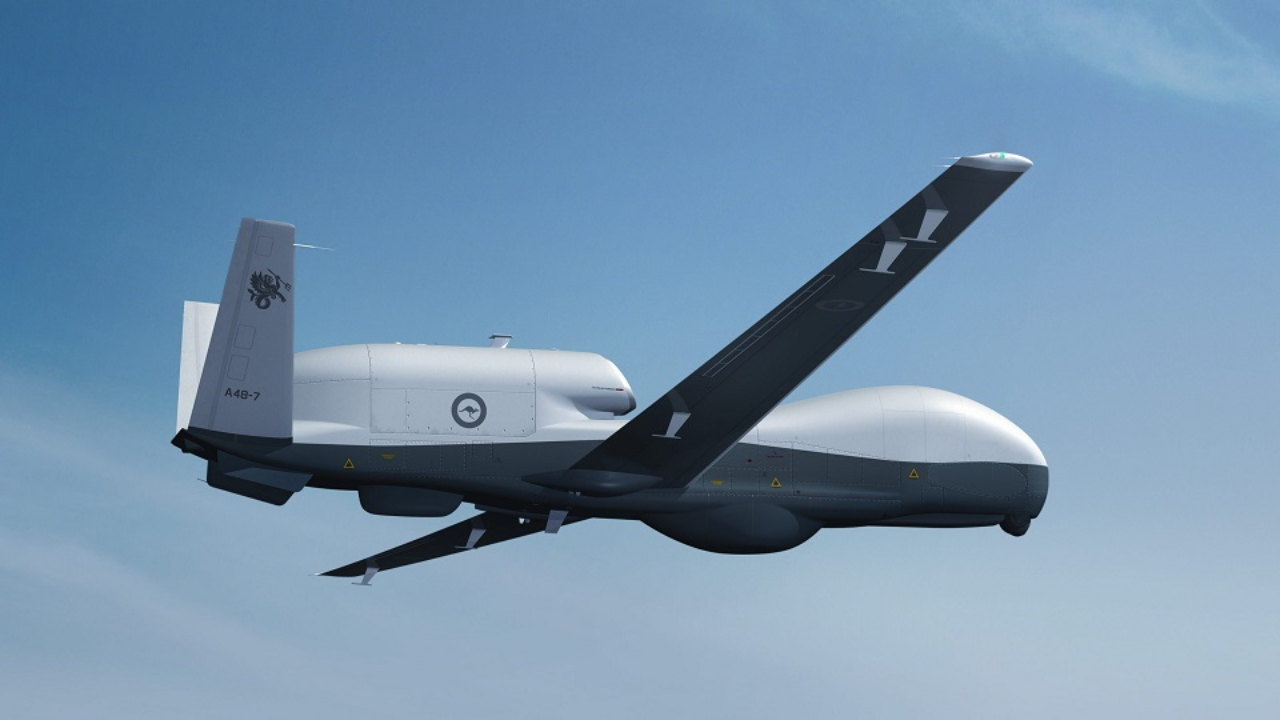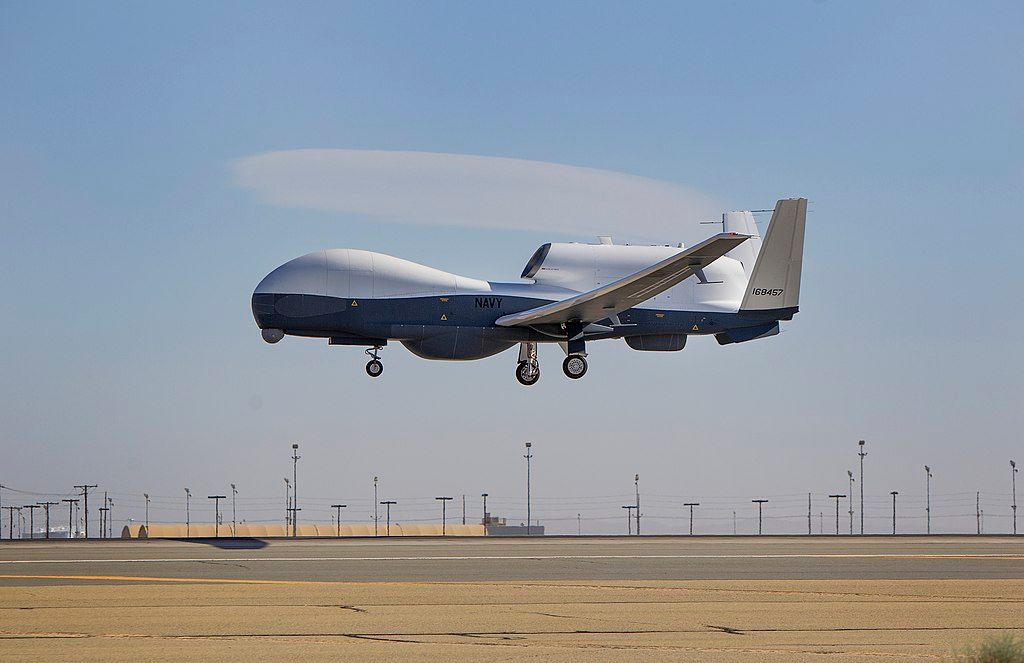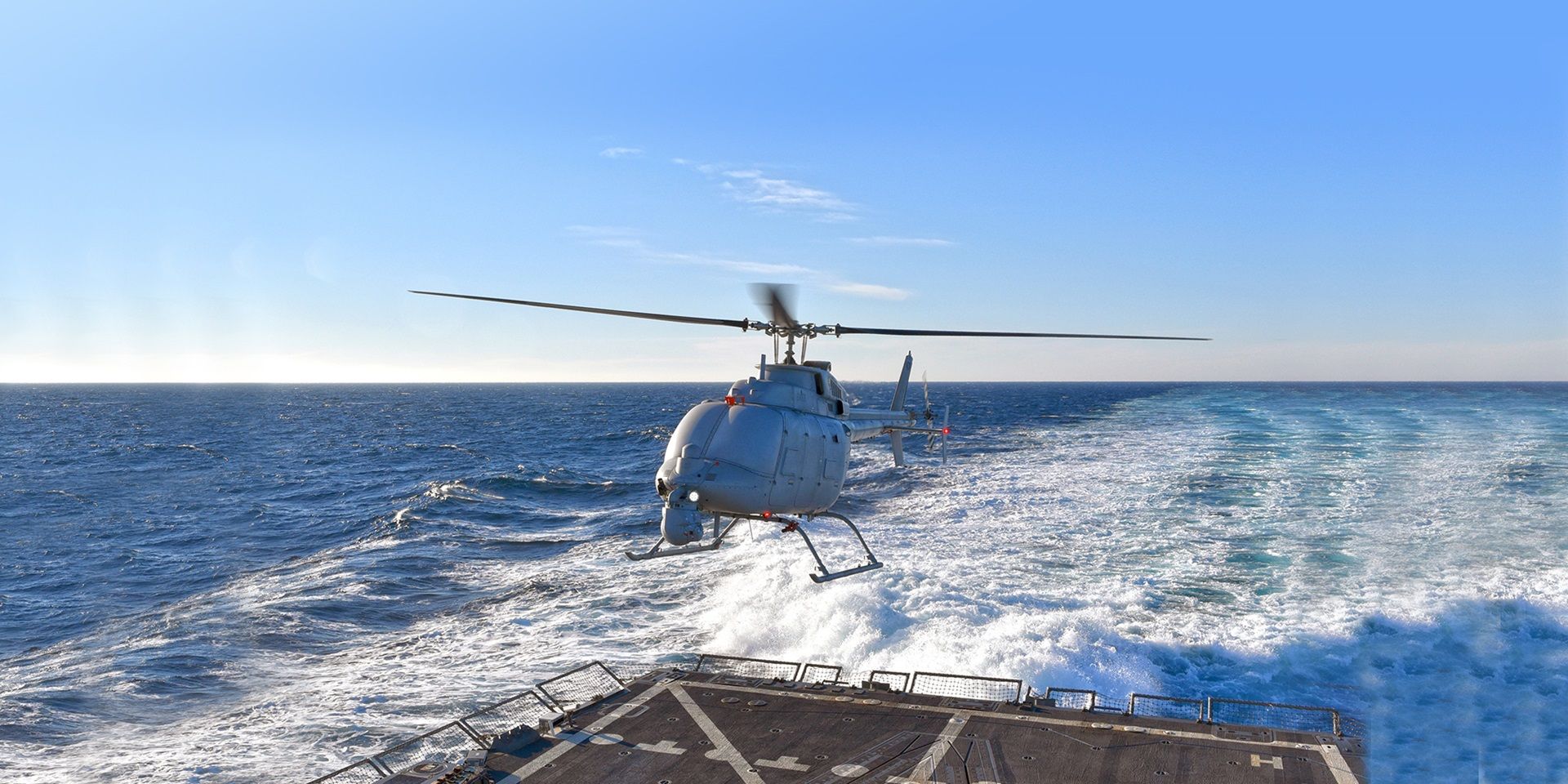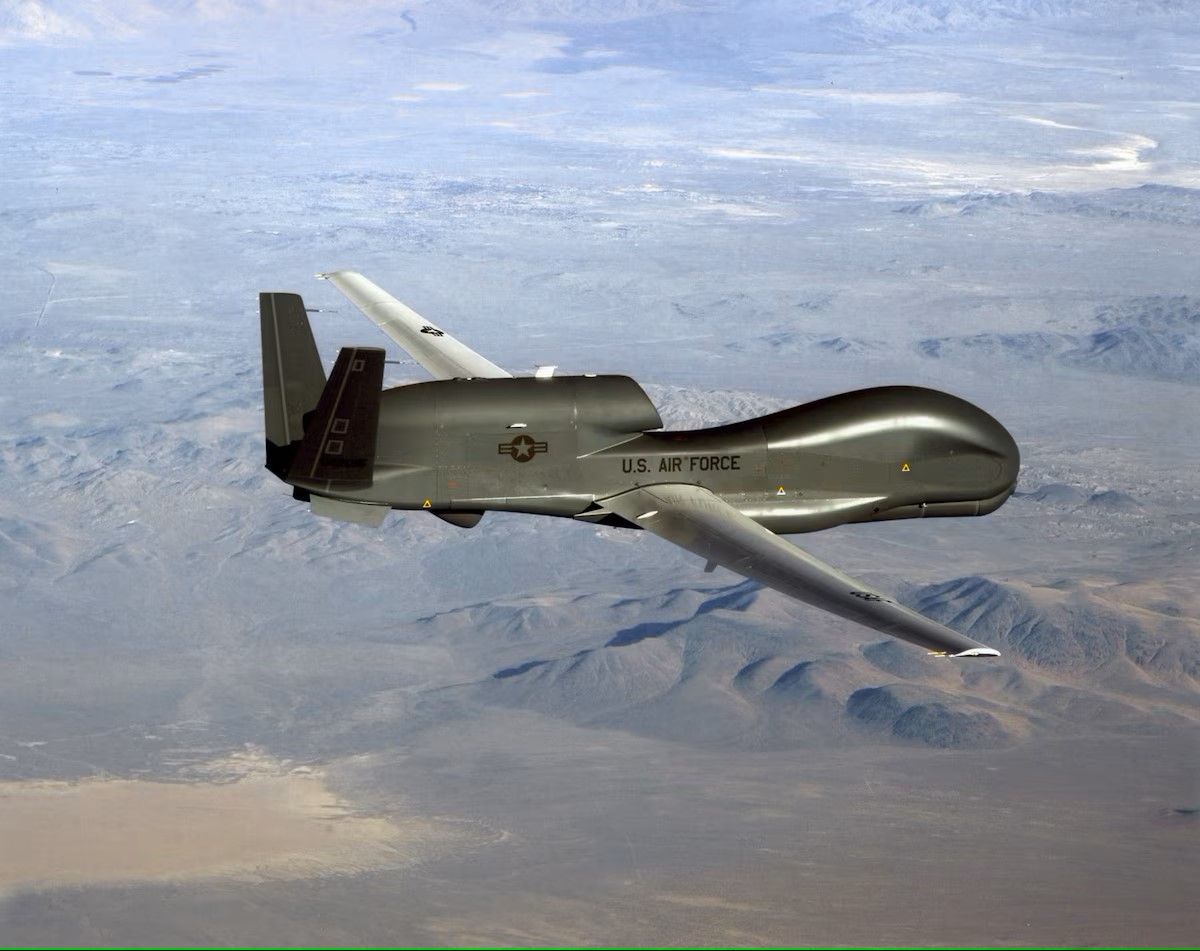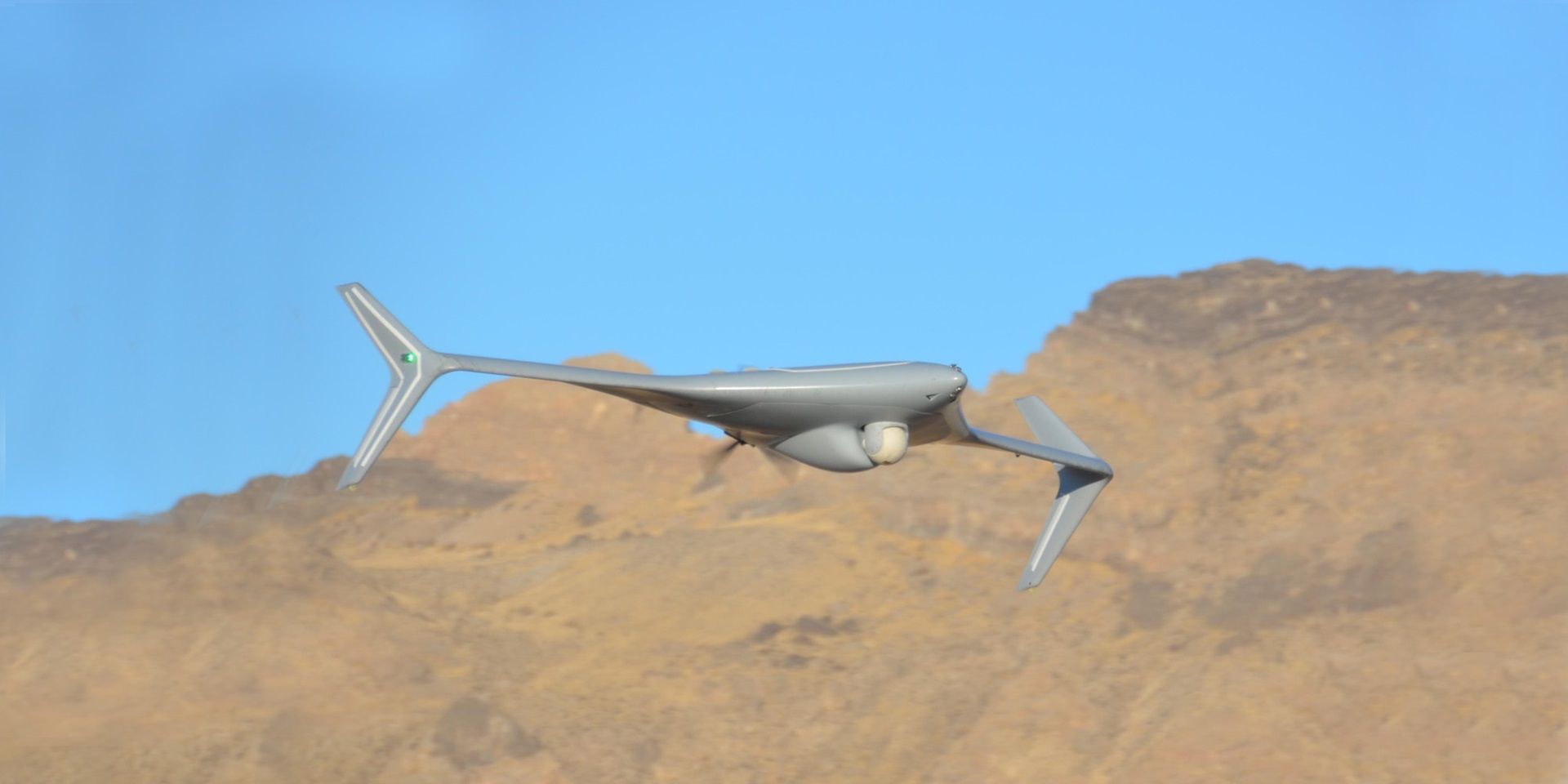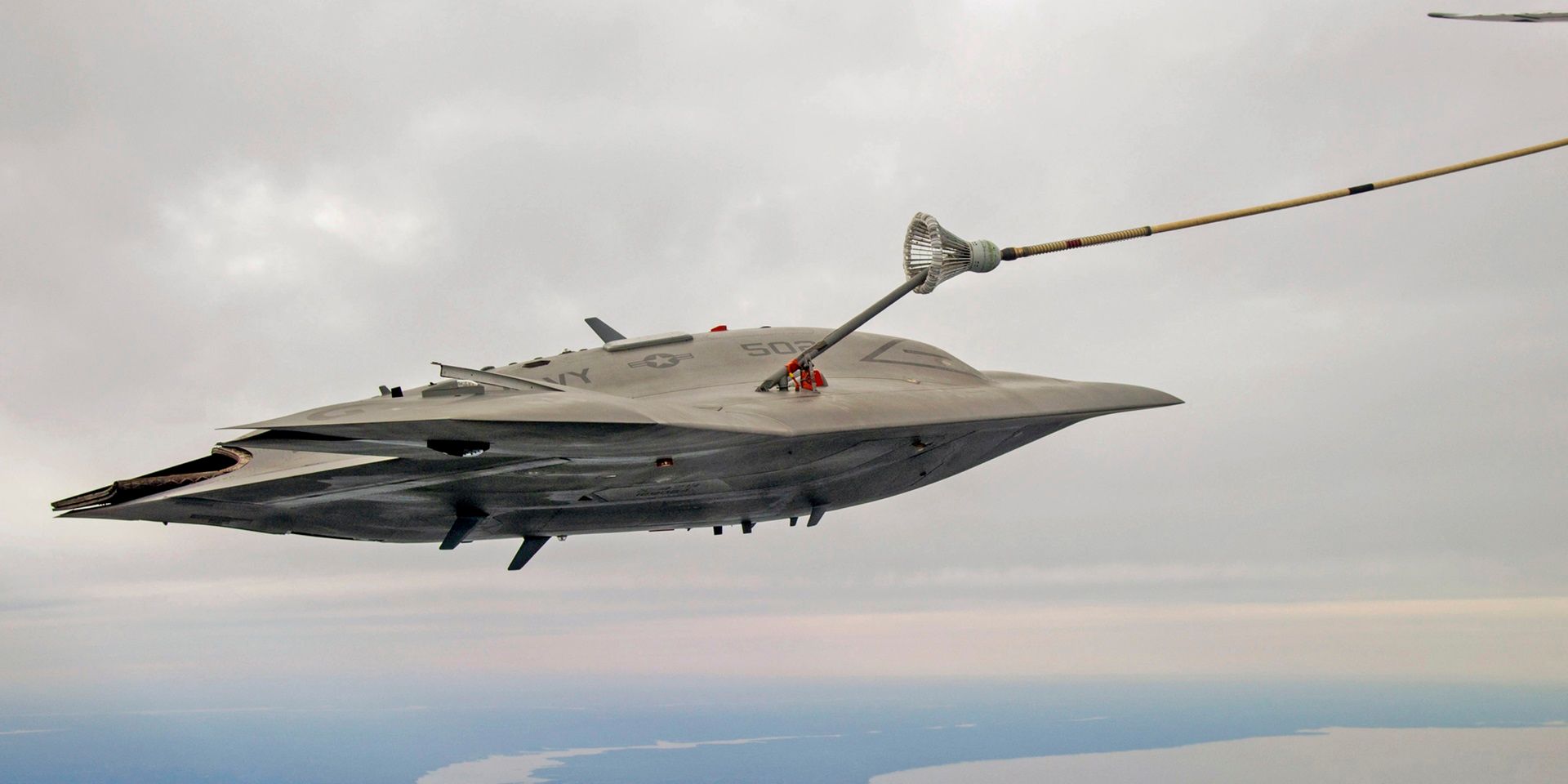Summary
- The MQ-4C Triton is world’s leading maritime surveillance drone with 360-degree sensor suite.
- The MQ-8 Fire Scout is designed for real-time ISR and target acquisition missions.
- The Global Hawk, Bat, and X-47B are Northrop Grumman’s other advanced drone models for various missions.
As the US Air Force manned fighter jet shrinks (and is expected to continue shrinking for the foreseeable future), more and more assets are unmanned aerial vehicles (aka drones). While Northrop Grumman is famous for producing the B-2 Spirit and B-21 Raider stealthy strategic bombers, it is also one of the top advanced drone contractors for the US military. Here are five of the advanced military drones Northrop Grumman has or is building for the US military.
1
MQ-4C Triton
Triton is a maritime ISR UAV based on the RQ-4 Global Hawk
|
First flight: |
2013 |
|---|---|
|
Status: |
In limited service |
|
Primary users: |
US Navy, Royal Australian Air Force |
The MQ-4C Triton could be the world’s most advanced long-endurance ISR maritime uncrewed system. It is built to provide commanders with in-theater situational awareness over vast oceans and coastal regions. The US Navy is planning to purchase 68 Tritons, while Australia is expected to purchase seven.
Northrop Grumman claims, “Triton’s 360-degree sensor suite integrated into an aircraft capable of extraordinary range, endurance and speed imparts a level of operational flexibility never before possible.” The Australian Air Force notes, “The endurance of the Triton means that it can stay airborne for longer than a traditional aircraft where the pilot is inside.”
2
MQ-8 Fire Scout
Fire Scout is an unmanned helicopter for ISR & target acquisition
|
First flight: |
2000 |
|---|---|
|
Status: |
Retired/in storage |
|
Primary users: |
US Navy, US Army |
The MQ-8 Fire Scout is an unmanned helicopter built to provide real-time ISR, target acquisition, laser designation, and battle management to tactical users without needing to rely on mand aircraft. Its main variants are the MQ-8B and the larger MQ-8C (which was based on the Bell 407 helicopter).
Photo: Northrop Grumman
Due to budget constraints, the US Navy retired its fleet of MQ-8Bs and replaced them with the MC-8Cs (the “Navy’s next-generation autonomous helicopter“). In March 2023, Janes reported Northrop foresaw a “bright future” for the system despite the divestments. However, in May 2024, FlightGlobal reported that the Navy plans to retire its new MQ-8Cs after only two years of operational service.
3
RQ-4 Global Hawk
Global Hawk is a High Altitude Long Endurance ISR UAV
|
First flight: |
1988 |
|---|---|
|
Status: |
In service |
|
Primary users: |
US Air Force, NASA, NATO |
The Global Hawk is perhaps Northrop’s best-known UAV (although it was initially developed by Ryan Aeronautical, which is now part of Northrop Grumman). It operates at altitudes of up to 60,000 feet for up to 30 hours. The originally planned procurement of 63 aircraft was reduced to 45 because of cost overruns (per unit flyaway costs grew to $131 million in 2013—more than most advanced fighter jets).
The US Air Force plans to retire its Global Hawks in 2027 (with some questions about what systems – secret or otherwise – will fill their role). Northrop states, “Global Hawk is designed to gather near-real-time, high-resolution imagery of large areas of land in all types of weather – day or night. Beyond intelligence collection a portion of the Global Hawk fleet has supported air and ground users with communications relay support. The EQ-4B Global Hawk previously carried the Battlefield Airborne Communications Node (BACN) payload providing life-saving support to warfighters.”
4
Northrop Grumman Bat
Bat is a Medium-Altitude UAV for ISR and tactical support
|
First flight: |
2006 |
|---|---|
|
Status: |
In service |
|
Primary users: |
US military |
The Bat is an ISR drone with a 12 to 14-foot wing span designed for Medium-Altitude Long-Enduraince missions. Its design is modular, allowing it to carry different payloads (including munitions and ISR sensors). It is a flexible platform that is runway-independent and fully autonomous, softening a self-contained expeditionary system.
Photo: Northrop Grumman
Bat is designed to launch from a pneumatic/hydraulic rail launcher and recover into a net recovery system. Regarding the current Bat family product line, Northrop says, “Under the command and control of its scalable, IP-based Ground Control Station, Northrop Grumman has successfully flown and deployed various mission payloads including ISR and EW using the Bat UAS.”
5
X-47B
X-47B is an experimental combat UAV designed for aircraft carriers
|
First flight: |
2011 |
|---|---|
|
Status: |
Active/in development |
|
Primary users: |
US Navy (planned) |
The tailless X-47B resembles a mini B-2 Spirit stealth bomber and is an experimental stealthy drone built for carrier-based autonomous operations. So far, it has demonstrated its ability to take off and land on aircraft carriers and has tested concepts for future autonomous strike aircraft and in-flight refueling.
Photo: Northrop Grumman
Two experimental X-47Bs have been built, and they are designed to help the Navy explore the future of unmanned carrier aviation. The system is “setting the stage for the development of a more permanent, carrier-based fleet of unmanned aircraft.” The future of carrier strike aircraft is set to be a mix of manned and unmanned aircraft.

